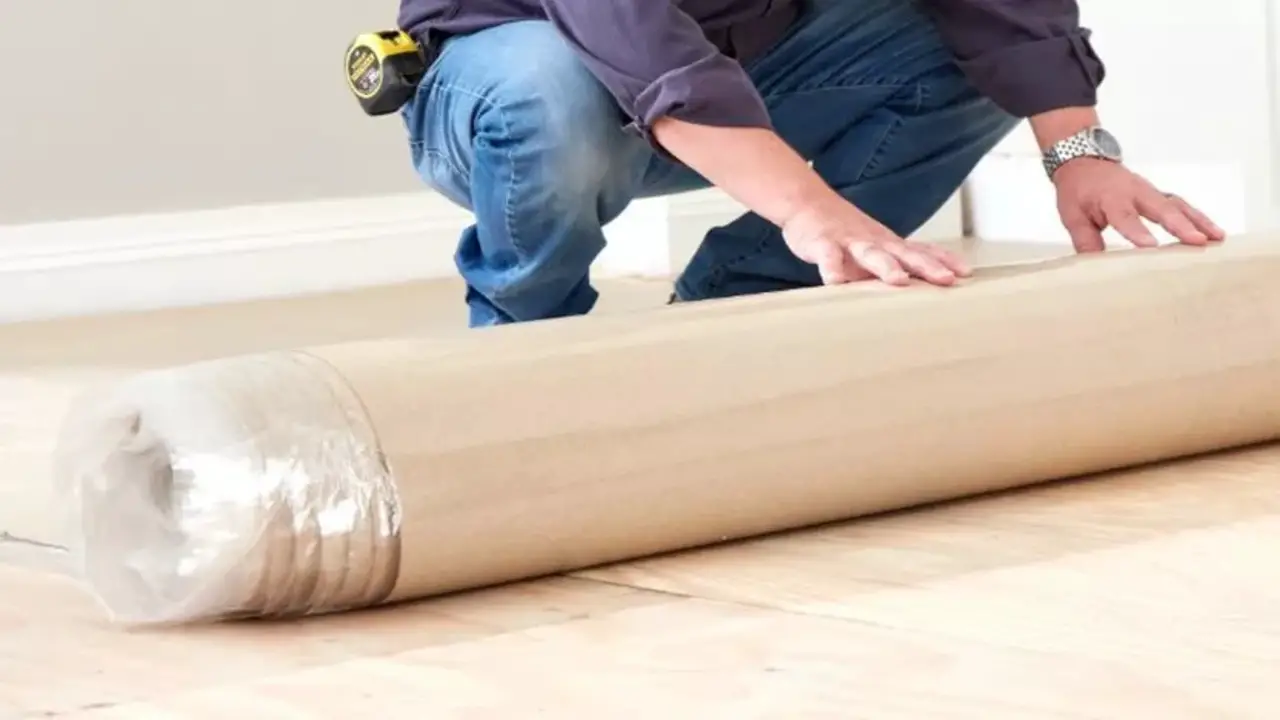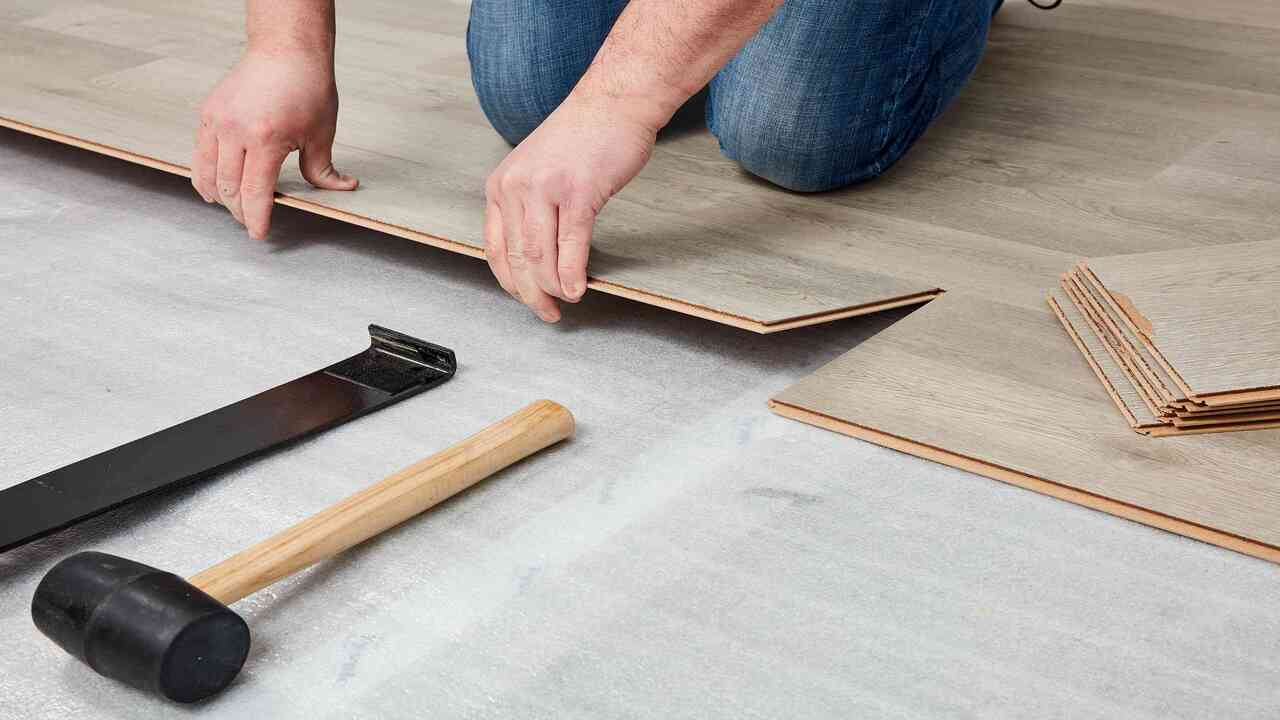Regarding flooring, two key components are crucial in its stability and longevity: the subfloor and the underlayment. Understanding the difference between the two and knowing which one to choose for your specific flooring type is essential.
In this blog, we will dive deep into subfloor vs underlayment, exploring their composition, importance, and various types available. We will also address common problems with subfloors and how to fix them. Additionally, we will guide you through the selection process of underlayments based on your flooring type and provide installation tips and techniques.

What Is A Subfloor?
The subfloor is the structural layer that serves as the foundation for the flooring in a building. Typically, people make it from plywood or oriented strand board (OSB). And is installed directly on top of the floor joists.
The subfloor provides stability and support for the flooring materials, preventing them from sagging or flexing under weight or pressure. It also helps distribute the load evenly across the floor joists, ensuring the floor remains level and sturdy.
What Is An Underlayment?
People install underlayment, a material layer, between the subfloor and the finished flooring. Its purpose is to provide additional support, insulation, and moisture protection. While the subfloor is the structural layer that provides a solid foundation for the floor, the underlayment adds extra stability.
It can help to reduce noise and vibrations. It also serves as a barrier against moisture, preventing it from seeping into the flooring and causing damage. The choice between a subfloor and underlayment will depend on factors such as the type of flooring being installed and the space’s specific needs.
The Role Of Subfloor Vs Underlayment In Different Flooring Types

Different types of flooring require specific subfloor vs underlayment. Subfloors provide stability and support, preventing issues like sagging and warping. Underlayments offer cushioning, sound insulation, and moisture protection.
Hardwood flooring may need a plywood subfloor with foam underlayment, while vinyl flooring could require a concrete subfloor with a moisture barrier. Consult professionals or follow manufacturer guidelines to determine the right subfloor and underlayment for your flooring type.
Understanding Subfloor: Its Composition And Importance

understanding the differences between subfloor and underlayment, it’s important to know that they serve different purposes in construction or renovation. The subfloor is the structural layer that provides a sturdy foundation for the finished flooring.
People typically make it of plywood or oriented strand board (OSB) and install it directly over the joists. On the other hand, the underlayment is a thin layer of material that goes on top of the subfloor and underneath the finished flooring.
Its main function is to provide a smooth and level surface for the flooring installation. While both subfloor and underlayment are crucial components of a flooring system, understanding their individual roles can help ensure a successful and long-lasting floor installation.
Types Of Subfloor: Concrete And Wooden
Two common types of subfloor materials used in flooring installations are concrete and wood. People typically find concrete subfloors in basements and ground-level floors. While wooden subfloors are more common on upper-level floors. Underlayment is placed on top of the subfloor to provide additional support, insulation, and moisture protection.
The flooring material being installed determines the specific type of underlayment required. Foam underlayment is often handy for laminate flooring, while tile flooring may require a cement backer board for added stability. Consulting with a professional can help determine your project’s best combination of subfloor and underlayment.
Common Problems With Subfloor And How To Fix Them

Moisture damage, unevenness, and squeaking are common problems with subfloors. It is important to seal the subfloor and use moisture-resistant materials to prevent moisture damage.
You can fix unevenness by using leveling compounds or adding extra layers of plywood. Squeaky subfloors can be remedied by securing loose boards with screws or nails. By addressing these issues, you can ensure a durable and smooth surface for your finished floor.
Understanding Underlayment: Its Composition And Importance
People place underlayment as an additional layer between the subfloor and the finished flooring. It provides additional support, insulation, and soundproofing. The specific flooring material being installed determines the type of underlayment needed.
Subfloor preparation is crucial for a successful flooring installation, ensuring a level and stable surface. Understanding the underlayment’s composition and importance is essential for choosing the correct subfloor material and achieving a durable and smooth surface for your finished floor.
Types Of Underlayment: Foam, Cork, Felt, Rubber, And Others

Foam, cork, felt, rubber and other materials are handy as underlayment for different flooring types. The installer installs underlayment on top of the subfloor. Providing additional cushioning, insulation, and soundproofing.
Foam underlayment is suitable for laminate and engineered wood flooring, while cork underlayment works well with tile and vinyl flooring. Felt underlayment is ideal for hardwood floors as it absorbs impact and reduces noise. Rubber and other materials offer various benefits depending on the specific flooring material.
Choosing The Right Underlayment For Your Flooring Type
When choosing the right underlayment for your flooring type, there are a few key factors to consider. Plywood or oriented strand board (OSB) typically makes up the subfloor, which provides a stable base.
On top of the subfloor, underlayment is installed to provide additional support, cushioning, and moisture resistance. Different types of flooring may require both a subfloor and underlayment, such as hardwood and laminate flooring.
Subfloors help prevent sagging, warping, and squeaking, while underlayment can reduce noise transmission, provide insulation, and act as a moisture barrier. Consider the type of flooring, desired sound insulation, and any moisture concerns when selecting underlayment.
Installation Of Underlayment: Tips And Techniques

Proper underlayment installation is crucial for ensuring the longevity and performance of your flooring. There are a few key tips and techniques to remember when installing underlayment. Firstly, ensure that the subfloor is clean, level, and free from debris or imperfections.
To ensure a smooth surface, we will install the underlayment on it. Secondly, choose the right underlayment type based on the flooring you are installing. Underlayment provides insulation, moisture resistance, and soundproofing for laminate, vinyl, and carpet installations.
Lastly, follow the manufacturer’s instructions for proper installation techniques and ensure the underlayment is installed securely and evenly across the floor. By following these tips and techniques, you can ensure a successful underlayment installation for your flooring project.
Comparing And Contrasting Subfloor Vs. Underlayment
When it comes to flooring, understanding the difference between subfloor and underlayment is crucial. The subfloor is the structural layer that provides support for the flooring above. It is typically made of plywood or oriented strand board (OSB) and is installed directly on top of the floor joists.
On the other hand, underlayment is a thin layer that sits on top of the subfloor and acts as a smooth. Level surface for the final flooring to be installed. It can help reduce noise, provide insulation, and protect against moisture.
While both subfloor and underlayment play important roles in a flooring project, choosing the right materials and installation methods for each is important to ensure a successful and long-lasting result.
Conclusion
In flooring projects, subflooring, and underlayment, words are often handy interchangeably. But the truth is, these two materials have different purposes and roles in any flooring project.
Both subfloor vs underlayment play crucial roles in maintaining the integrity and longevity of your flooring. While the subfloor provides a stable foundation for your flooring, the underlayment offers additional benefits such as insulation, moisture protection, and soundproofing.
The choice between subfloor and underlayment depends on various factors, like the type of flooring you have, the condition of your existing subfloor, and your specific needs and preferences. If you’re unsure which option is best for your flooring, consult a professional to get expert advice tailored to your situation.
Frequently Asked Questions
[rank_math_rich_snippet id=”s-9b719458-9731-428e-b23a-7bd475ee43bf”]

I am passionate about home engineering. I specialize in designing, installing, and maintaining heating, ventilation, and air conditioning systems. My goal is to help people stay comfortable in their homes all year long.


